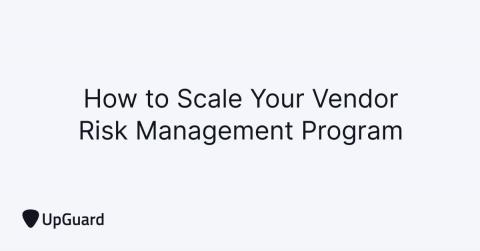Mitigating Third-Party Vendor Risk in Your Supply Chain
A recent survey by the analyst firm Gartner showed that 89% of companies experienced a supplier risk event in the last five years; however, those companies' overall awareness and plans to mitigate lacked maturity. As a result, it is no longer enough to secure your own company's infrastructure. You must also evaluate the risk posed by third-party vendors and plan to monitor those organizations for breaches.









